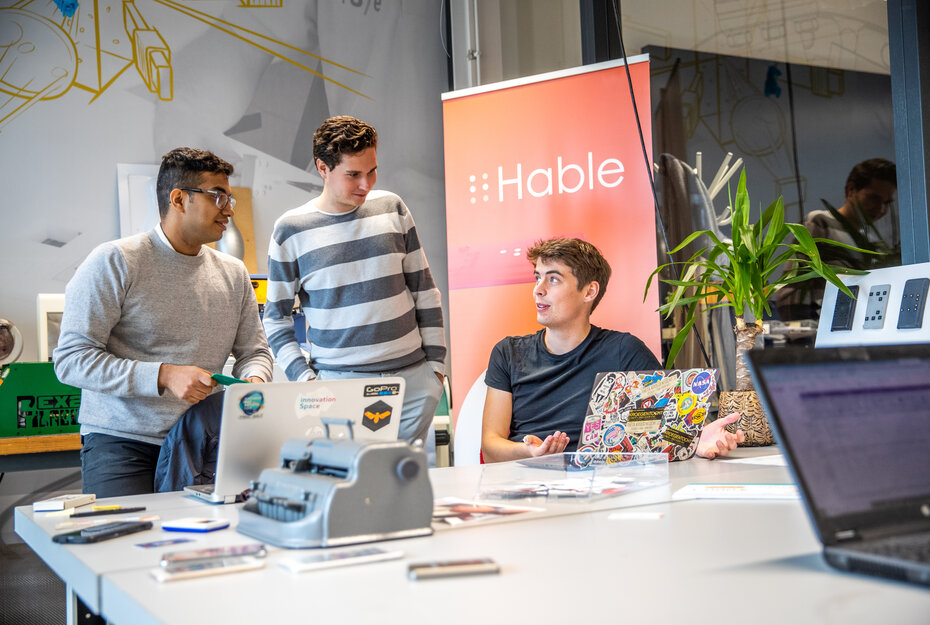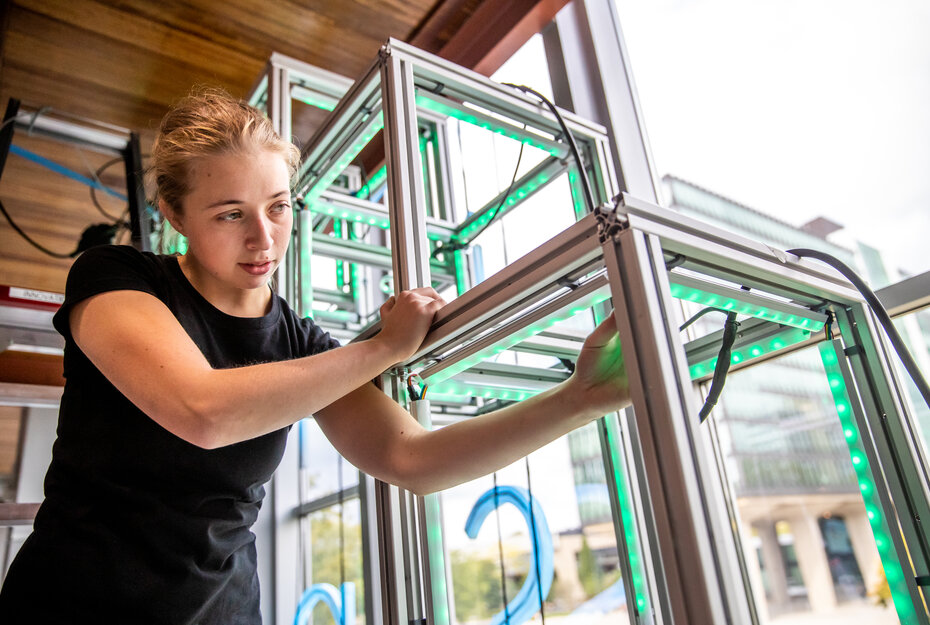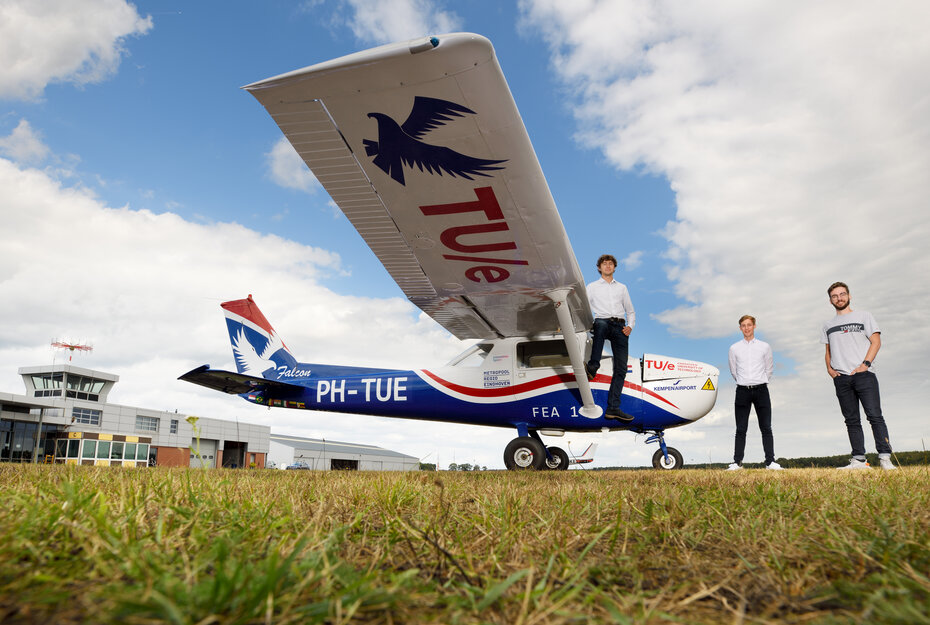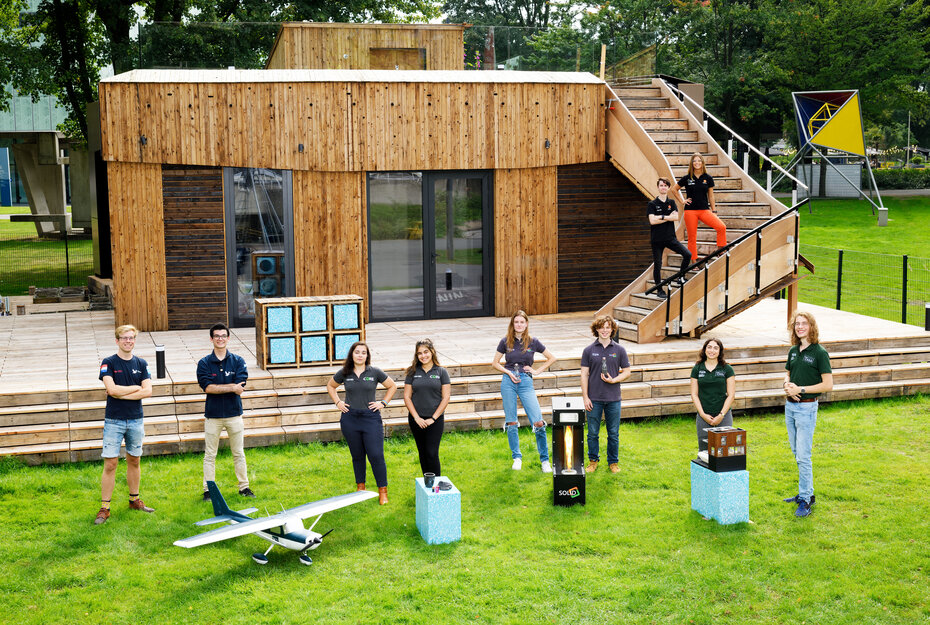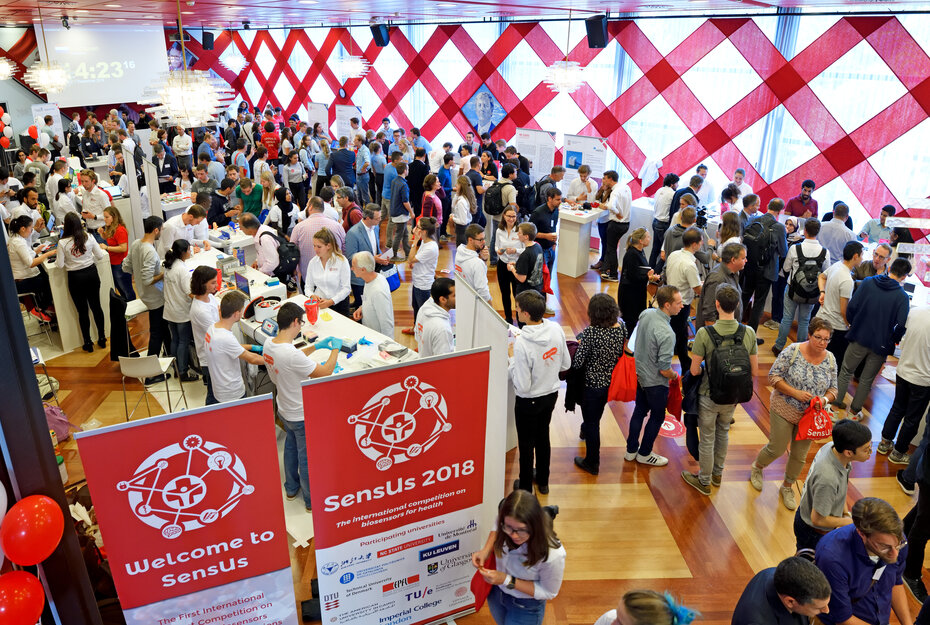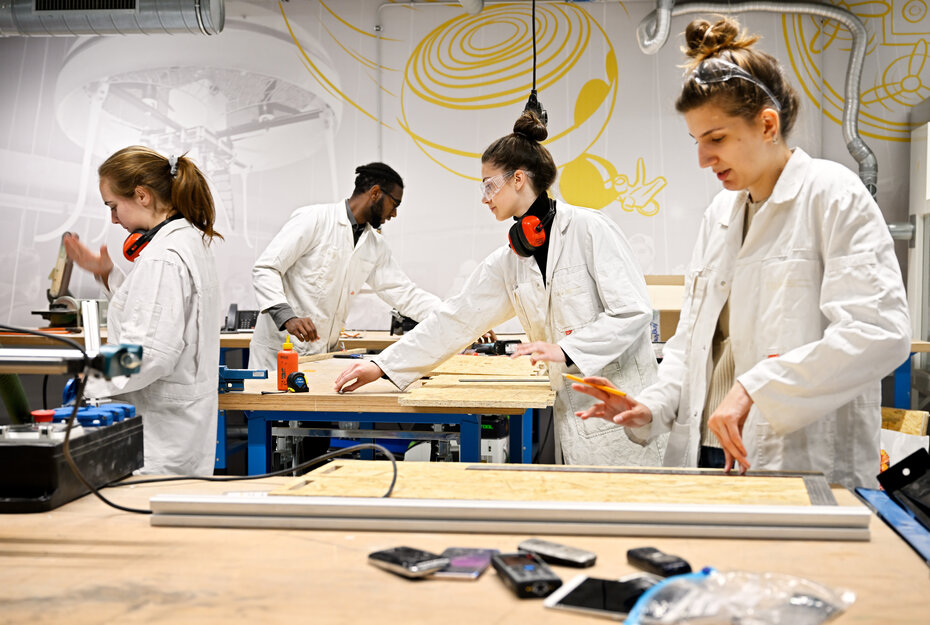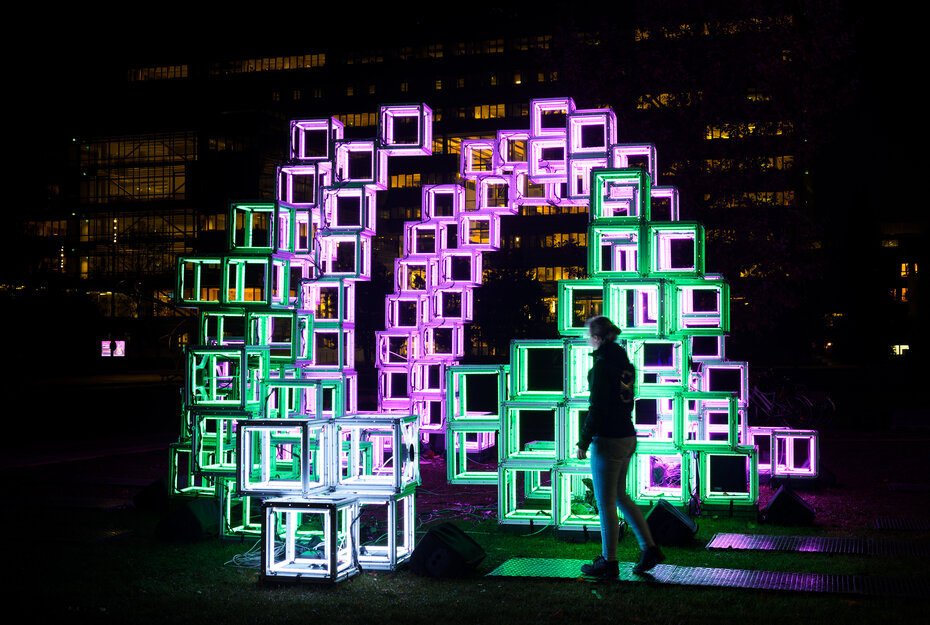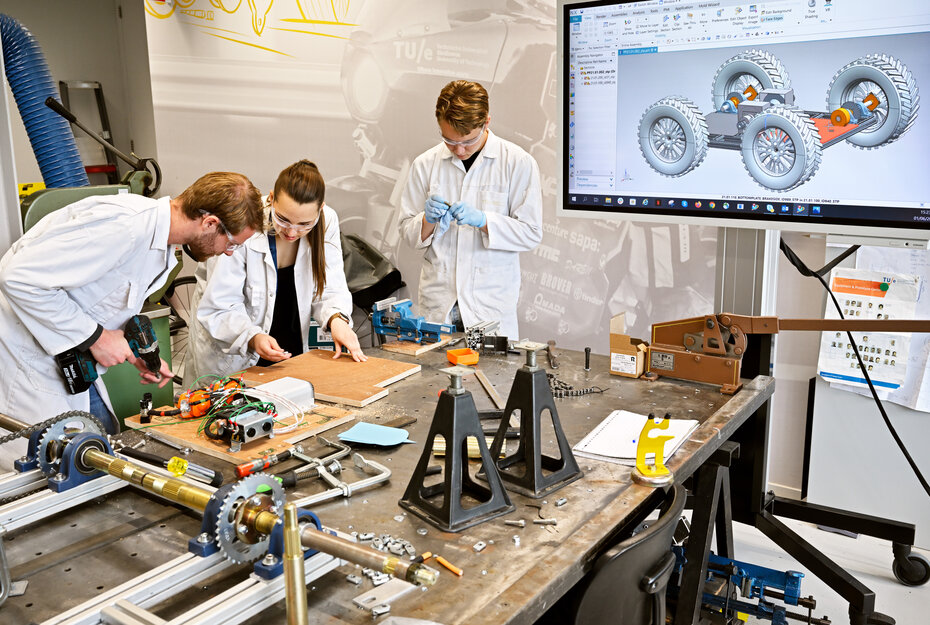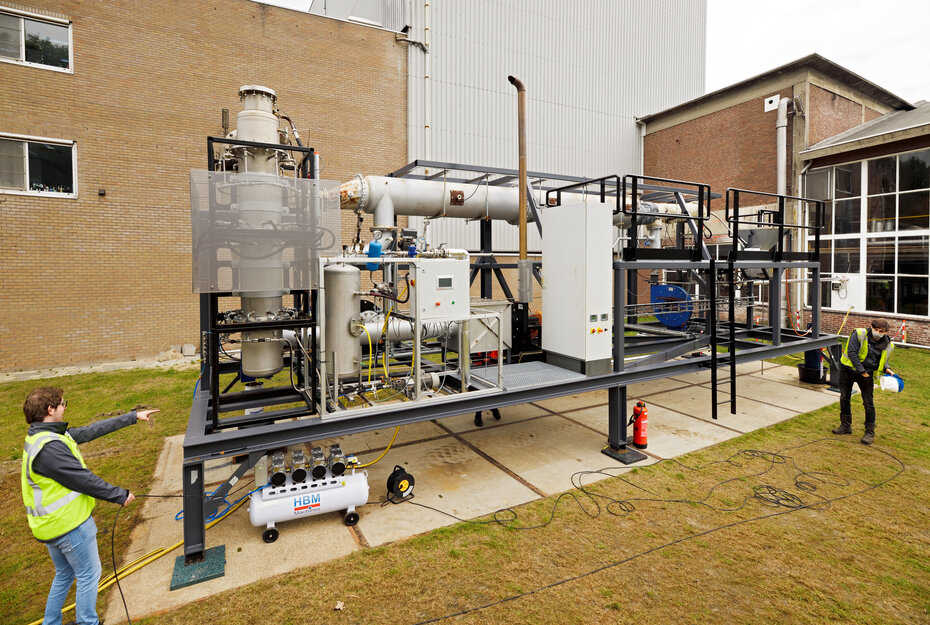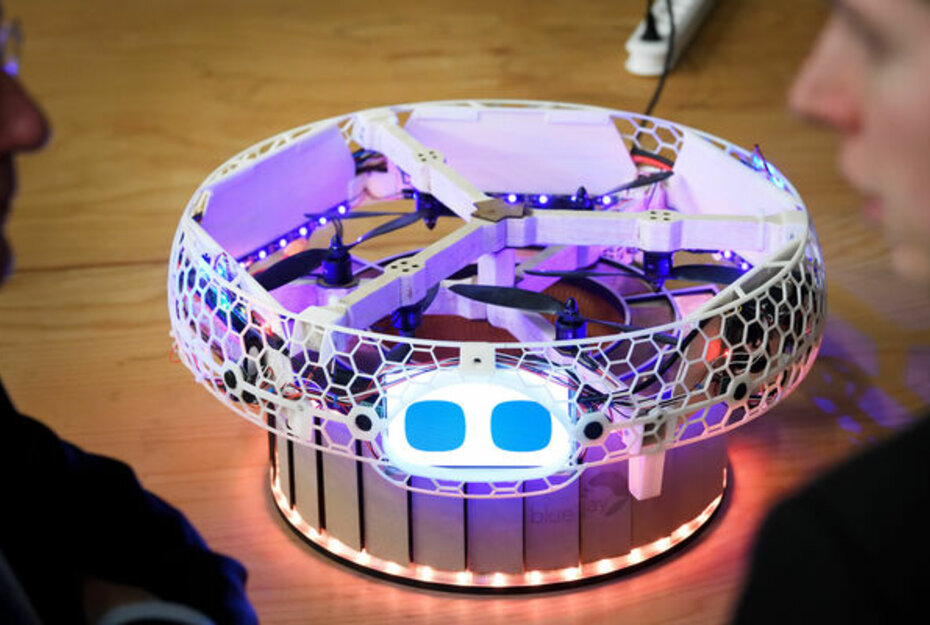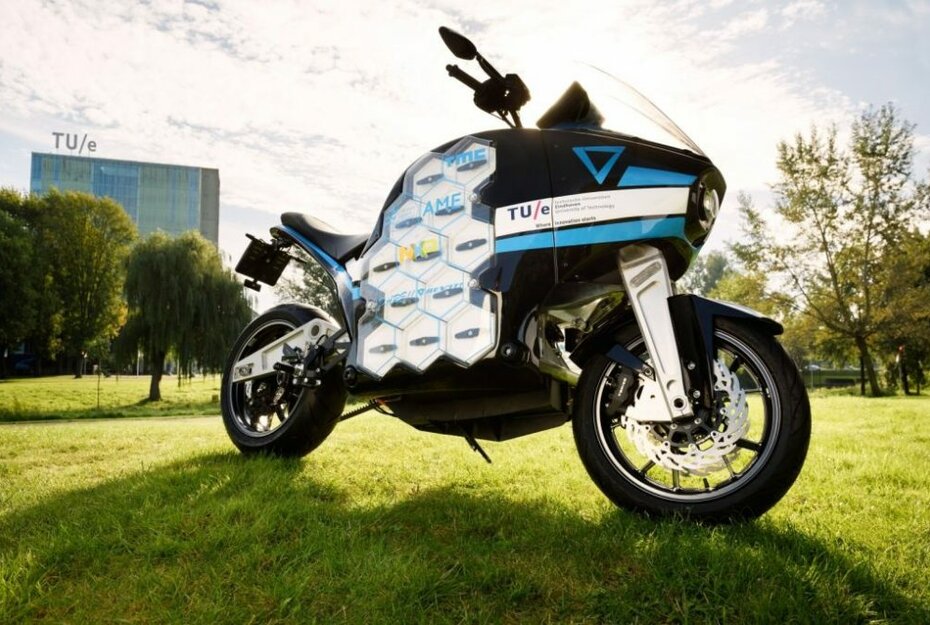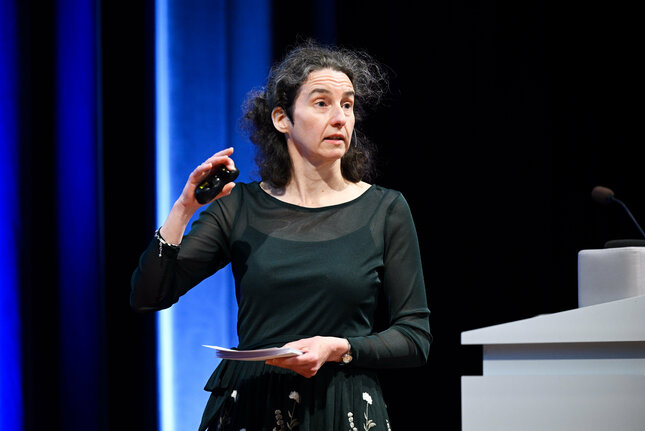'Dealing with uncertainty, that’s what we want to teach our students'
‘The Faces of Challenge-Based Learning’ series: Isabelle Reymen, scientific director of TU/e innovation Space, which took CBL to the next level.

With the innovative educational concept of Challenge-Based Learning (CBL), we are training the engineers of the future at TU/e. Starting this academic year, CBL will play a larger role in the curricula of all our bachelor's programs. Through a series of stories, we give a face to the form of education that sometimes takes students - and teachers - out of their comfort zone, but above all prepares them for the challenges they will tackle as engineers. In this episode: Isabelle Reymen, scientific director of innovation Space. She is the systems builder of the CBL community and continually challenges the status quo for greater innovation.
If you ask Isabelle Reymen, Challenge-Based Learning (CBL) is about two things: the student is in charge of their own learning path and they learn to deal with uncertainty. The scientific director of innovation Space, the center of expertise on CBL and student entrepreneurship, has plenty to say about the latter.
For Reymen, introducing CBL as an educational concept at our university and setting up the innovation Space (almost eight years ago) were the ultimate CBL assignments as there was plenty of uncertainty with every step forward in the process.
What is Challenge-Based Learning?
In this innovative educational concept, students work together to experience how their discipline can contribute to solving challenges from the world around us. They learn what knowledge and expertise is needed to do so and can immediately apply and deepen the knowledge they have acquired in practice by studying or doing research.
Together with students from other disciplines, as well as stakeholders from business, government or science, students learn to think at the system level. In the process, they also learn various other competencies such as collaboration, communication, planning and organizing.
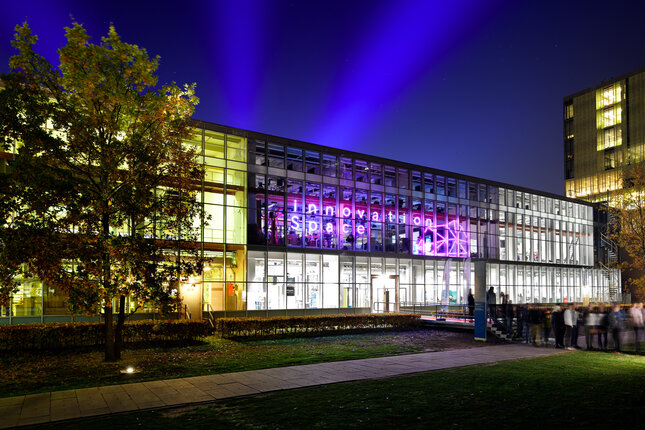
“At TU/e, CBL started with student teams, which often emerged from honors teams. They worked on challenges of their own choosing, related to their passions and intrinsic motivations,” Reymen says.
There was a ‘but’: “This was extracurricular. In 2015, I was asked how we could ensure that this kind of learning was integrated into our education. This was the starting point for CBL and innovation Space, a place where all of this could come together.”
4,400 students per year
TU/e innovation Space, the expertise center for CBL and entrepreneurial learning, is housed in the Matrix building and facilitated some 1,600 students a year at its inception. “We experiment with CBL and try to facilitate things for others,” summarizes Reymen.
“We train our students to be change agents of the future because they will have to solve the societal challenges at hand, such as the energy transition, the aging population and the climate crisis. Students are ready for this. They enjoy helping to solve the problems; it gives a sense of fulfillment. Our task is to teach them the way so that they can do this.”
Students are ready for this. They enjoy helping to solve real problems; it gives a sense of fulfilment.
Isabelle Reymen
“We - Miguel Bruns, Rick de Lange and I - started in 2017 with just a few CBL courses. I had absolutely no idea what the innovation Space would really be like. It was great that we already had a building (Gaslab, ed.) and were able to move to another premises within a year along with the Equipment Prototyping Center (in Matrix. ed.).”
Finding pots of money
“It was extremely hard work for our team, but it ran smoothly. There was room to take on more people. And we had to submit a business case to fund the innovation Space. As treasurer of my group, I knew how it worked financially, but this was completely different. Three times we came up with a set-up that was not what the Executive Board was looking for.”
“I no longer knew what I had to do to get our proposal through and we needed money to move forward. We had to determine what pots we could get money from, but I had no insight into where those pots were and which even existed. I was just an associate professor in a group.”
Peace
The solution arose through intensive collaboration in co-creation with the Finance and Control service. Reymen: “They gave me the insight and showed me which pots we could draw from. Finally, in January 2020, our business case was approved and there was money for five years, which gave peace of mind.”
Today, the innovation Space team consists of a diverse group of people: educational developers and designers, education and event coordinators, program and project managers, researchers, technical support staff, communications staff and a whole lot of students.
Reymen sums it up: “They facilitate innovations in CBL education, collect challenges for many courses and make multiple connections with the innovative ecosystems around TU/e. They form a CBL expert pool for TU/e teachers, coach an entrepreneurial attitude in students and are judges of interim and final presentations. Furthermore, they facilitate, in many ways, the student team program, the creation of prototypes by many hundreds of students and the great number of community events and (inter)national visits.”
Teachers
Above all, innovation Space is a center of expertise that facilitates others to work with CBL. “We have teachers connected to us who are at the forefront of educational innovation and who enjoy doing this together and learning from each other. There is also a lot of uncertainty and anxiety among teachers when it comes to getting started with CBL, but if you really help them and take them through it, it becomes less tense. We are in the process of developing even more guides, such as the recently launched toolkit for teachers.”
Student teams are the most radical version of CBL.
Isabelle Reymen
Student teams
Five years after the establishment of innovation Space, 4,400 students engage with it annually thanks to some 40 CBL courses and more than 40 student teams. In the latter, around 650 students work with 700 partners and sponsors.
“Student teams are the most radical version of CBL because students have complete freedom to choose their own challenge and decide their own problem and how they want to solve it. They are in charge of their own learning,” says Reymen with pride. “CBL motivates students to improve the world, to come up with solutions. They develop prototypes ahead of the market, establish startups. They’re really making an impact.”
The pictures below are made by Bart van Overbeeke and Angeline Swinkels.
Entrepreneurial attitude
That entrepreneurial attitude is key, says Reymen. “If you have it, you can deal with uncertainties. Our world is constantly in flux, is complex and dynamic. It helps enormously if you’re able to move with it and figure out how things can be done.”
Old vs new
Reymen thinks that the time is more than ripe for a new education system. “In the traditional education system, we dump the same content at the same time on all students in a lecture hall regardless of their background, prior knowledge or learning style. They have no autonomy or control over what or how they learn. That makes the education inauthentic and leaves no room for passion.”
She continues: “Students are now in the bubble of their own program or department. We lack collaboration across those bubbles in order to give other context to solutions that others are working on. This has to change because the world needs people who can work well together on big challenges. That’s what we’re doing with CBL.”
CBL is not the same meat with different gravy
Isabelle Reymen
Reymen is sometimes asked how Challenge-Based Learning differs from other forms of education such as Problem-Based Learning, Project-Based Learning and Design-Based Learning.
She emphasizes that “CBL is not the same meat with different gravy. There are similarities between those four types of learning: they all stimulate active student learning and link students to practice by having them work on actual problems. But within CBL, learning is much more contextual, involving much more complex real-life and open-ended challenges from companies and societal organizations.”
“Moreover, students work together in self-directed interdisciplinary groups for extended periods and often produce solutions that can also make a real contribution to society. In addition to acquiring and applying knowledge, students build professional skills such as leadership, communication and presentation. On top of this, students are more in the lead.”
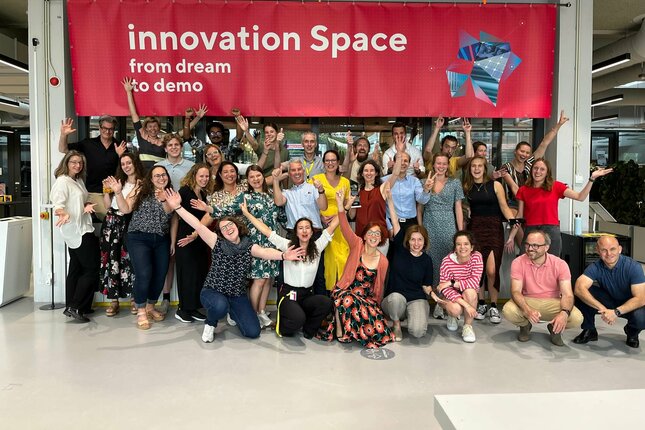
Recognition
“The bar is very high and when opportunities come along, you take them.” Reymen is referring to winning the Dutch Higher Education Award in 2021 and being awarded a Comenius grant for educational innovation in 2020.
“The first time I applied for that grant, I didn’t get it. I’m not an educationalist and I don’t have a good knowledge of educational literature. ‘I won’t do that again,’ I thought at the time. But then along came Jan Vermunt of the Eindhoven School of Education, who helped me with the application and elaboration. It then worked out. I may be the Comenius Leadership Fellow now, but I would never have succeeded without the support of the whole team.”
Family
When you take on such a large task with a small team, things tend to quickly become close-knit. “I may be the figurehead but what’s there now is really a team effort. We have a great team with a lot of energy and a very high bar. It feels like a family. This family goes through fire for one another and for their belief in structural innovation in education.”
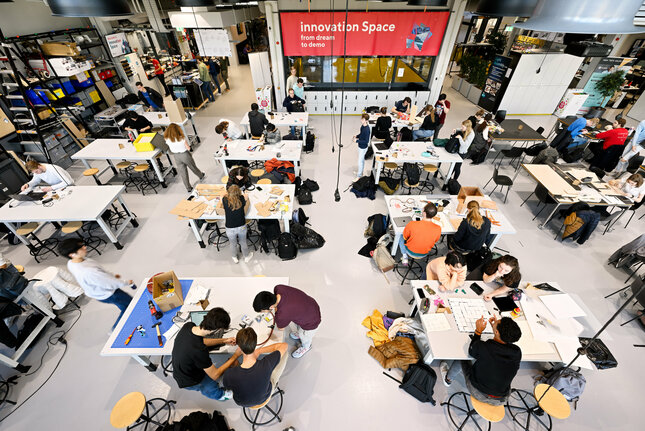
“I want us to be a good employer to our people. This means, for example, that we have to provide good workplaces. We work in an office space in Matrix, but this is no ordinary office. There are constant events, visits from parties who want to see how we work, and student teams at work. It’s an inspiring but boisterous environment.”
At the edge
Reymen works for innovation Space three days a week and supervises PhD students in the Department of Industrial Engineering & Innovation Sciences the other two days as a professor of Design of Innovation Ecosystems. “I work between 55 and 60 hours a week. Fortunately, I have an incredible amount of energy and can get a lot of work done.”
But even a barrel of energy occasionally needs to hit the brakes. “I have never had a burnout but I have been at the edge at times. Then I get jittery and no longer react professionally. They notice this at home and at work. I then switch to working 40 hours a week, so I can push through basic things and do nothing at night. That’s kind of a vacation for me,” Reymen says with a smile.
For someone who constantly challenges the status quo and wants to keep moving forward, stagnation is regression, “but if I switch back to that manner for a few weeks, I’m recharged and I can keep going.”
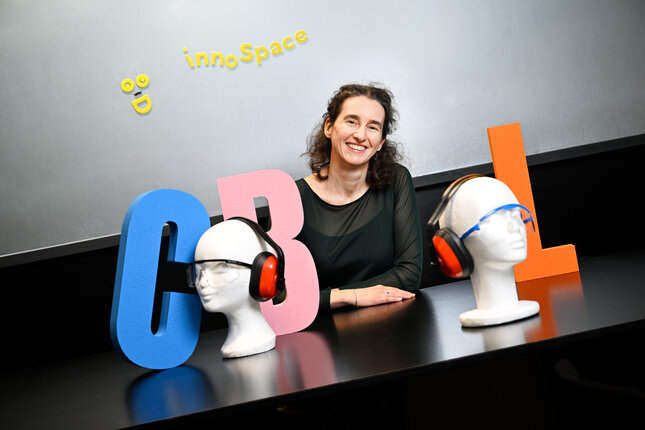
Sabbatical
In the fall, Reymen will take a sabbatical for the first time in eight years – ever since she got on the roaring CBL and innovation Space train. “I hope to be able to go on sabbatical in peace, that I will have arranged things well for the team by then. Because I don’t want them to have to go into overdrive to compensate for my absence.”
The plan is to spend a few months at home to quiet things down. “Working every evening and weekend leaves little time for other things so I’m going to play the piano again, play more tennis, make photobooks and decorate my house. I turn 50 in November and I’m going to celebrate properly. And when I feel the space, I might start writing down the most important lessons from the development of TU/e innovation Space and look ahead.”
Work-life balance
Heading into the fall, the biggest challenge for Reymen lies with her team. “I want to give them the right work-life balance. What will we do and what won’t we? Everyone wants to keep going but I have to make sure that no one falls over the edge.” She smiles. “And that’s how you grow from a teacher/researcher to a manager. We want to improve the world in terms of education but we also have to take good care of our team.”
In five years...
As for the question of where innovation Space and CBL will be in five years, Reymen has to think for a while. “By then, I hope that we will have linked everything together: teachers, students, student teams, researchers, the institutes, the outside world. That innovation Space will be one vibrant environment in which we work together in thematic communities. I believe in that and I’m looking forward to it because together we can achieve so many great things for the world.”
More Faces of Challenge-Based Learning
More on our strategy


![[Translate to English:] [Translate to English:]](https://assets.w3.tue.nl/w/fileadmin/_processed_/c/f/csm_BvOF_2024_0319_AEV_license_TUe_Dirk_van_Meer_-_CORE_1__c976e259a5.jpg)
